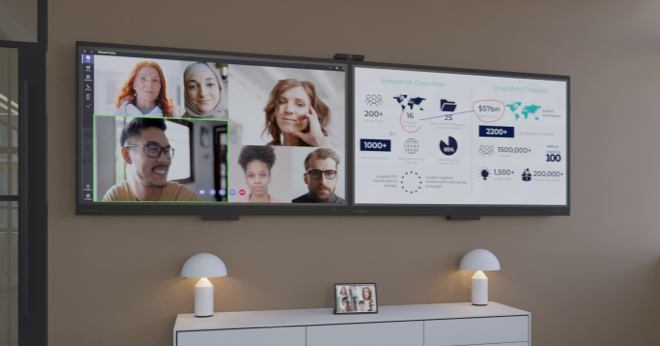What does interoperability actually mean?
Interoperability is the property that allows the unrestricted sharing of resources between different systems. This can refer to the ability to share data between different components or machines, both via software and hardware. It can also be defined as the exchange of information and resources between different computers through local area networks (LANs) or wide area networks (WANs). In a nutshell, Interoperability is the ability of two or more components or systems to exchange information and to use the information that has been exchanged.
Let’s break it down further…
There are Two Types of Interoperability:
1. Syntactic Interoperability – where two or more systems can communicate and exchange information, regardless of their language or interfaces.
2. Semantic Interoperability – when the information exchanged between two or more systems is understandable, i.e., the data is meaningful.
This applies to video-conferencing in that the two systems (for example, Zoom and Teams) are unable to communicate or share information with each other – meaning you have to use one or the other.
Why does interoperability matter in the workplace?
Let me paint the picture: you’re all gathered together in a huddle space, ready to take an important call with a client at 2 pm. But hang on – the client calls from a Zoom Room – you’re gathered together in a Teams Room. What happens? No call.
When it comes to video, a lack of interoperability across the conferencing platforms is a significant pain point for IT Administrators and end-users alike. IT Admins have to deal with the chaos of managing multiple platforms while monitoring the threat of Shadow IT platform use.
For end-users (i.e., employees) – a lack of interoperability in video-conferencing means reduced productivity, more technical issues, and less effective meetings. Historically, this might not have been such an issue, but considering the shift to remote working – video interoperability is now essential.
With 3 in 4 expressing a preference for a mix of home and office work – video-conferencing isn’t going anywhere. It’s here for the long haul. And businesses need to be equipped for seamless and hassle-free video-conferencing – whatever the platform is.The big companies have picked up on this: namely Teams and Zoom. As of this year, you can now launch a Zoom call from a Teams Room – but with a myriad of other video-conferencing platforms out there, we’re still not seeing full interoperability the way we’d like to.
The Hybrid Meeting Room
In recent years, BYOD or Bring Your Own Device has been an instrumental component of many organizations’ digital strategies. As BYOD allows employees to work with the tools they are comfortable and familiar with, it provides more autonomy and control around the way they work. Ultimately, this improves flexibility and accessibility in the workplace.
As BYOD has grown in popularity, so too has BYOM (Bring Your Own Meeting). BYOM refers to technology that allows you to use your own device with the hardware already in the meeting room (rather than relying on pre-configured meeting room systems for wireless presentation, videoconferencing, app launching, etc.). An example – you can walk into any huddle space and launch your scheduled Zoom video call from your phone.
It’s easy to see the merits of having BYOM-enabled meeting spaces – it navigates around the historical issues of rigid meeting schedules and technology. Teams can collaborate quickly with those both inside and outside of the business, whatever video-platform they choose to use.
Going forward, hybrid working will become normalized. Some employees are working from the office, others working from home. Technology is going to play a vital role in carving out what the new hybrid workspace looks like.
This blog was originally published by DIsplayNote Technologies.

